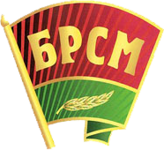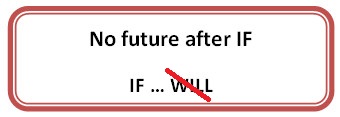A radio program about art
In That’s Amazing! today we’ll look at some interesting facts concerning the history of art. You may find some of them difficult to believe, however, everything you’re going to hear about is true.
Feel excited? Let’s get started. Do you like the Olympic Games? You may wonder what sport has to do with art? Well, there is a perfect example of sport and art once being closely connected. Art competitions formed part of the modern Olympic Games from 1912 to 1952. Medals were awarded for works of art inspired by sport, divided into five categories: architecture, literature, music, painting, and sculpture.
What do we know about the competitors? Few of them can be considered well-known artists globally but they were real national heroes of their time. For example, the 1928 gold medal for architecture was awarded to Jan Wils for his design of the Olympic Stadium used in the same Olympics. There were even Olympians who won medals in both sport and art competitions. Incredible, isn’t?
By 1952 the art contests had been replaced with art exhibitions without awards or medals. The main reason for abolishing the art competitions was the fact that by that time practically all contestants were professionals while the original rules required all competitors to be amateurs.
Well, the first Olympic Games started in Greece and our next amazing fact is to do with ancient Greece too.
In the autumn of 2007, Harvard University hosted an exhibition of great importance. On display were painted replicas of Greek statues and other works of Greek and Roman sculpture. Why were they painted? The exhibition was aimed at demonstrating that the practice of painting sculpture in bright colours was very common in ancient Greece. Actually, this unbelievable fact had already been known by the early 19th century. However, some influential art historians were such strong opponents of the idea that proponents of painted statues were dismissed as eccentrics. It was not until findings published by German archaeologist Vinzenz Brinkmann in the late 20th and early 21st century, that it was finally established beyond doubt that ancient Greek sculptures were painted. After thousands of years, those paints wore away and presented us with the image we are all used to.
Painted Greek statues? Sounds like something tasteless to me. Speaking of tasteless art, have you ever visited the Museum of Bad Art? It is situated in the United States and its permanent collection includes 500 pieces of "art too bad to be ignored”. To be included in MOBA's collection, works must be original and have a serious intention, but they must also have significant flaws without being boring; curators are not interested in displaying deliberate kitsch.
The founders say it isn’t as easy as it may seem to get your piece of art displayed at this museum. According to them, nine out of ten pieces don’t get in because they’re not bad enough. So if you think your work of art deserves to be displayed at MOBA, make sure you really meant it but it turned out to have an “Oh my God” quality.
How many paintings of this kind have you seen, by the way? And where is this fine line that separates good and bad art?
What do you think of Malevich’s Black Square for example? It’s in art history books and commonly considered to be a great work of art. However, there are people who think it’s something anybody can produce without making any effort and therefore not valuable. You know Malevich wasn’t the first to come up with the idea of creating Black Square. The picture with just black background in it was first painted twenty- two years before Malevich’s work by a French humourist Alphonse Allais. It was called “The Battle of the Negroes in the Deep Dark Cave at Night”.
Perhaps the only difference between Allais and those who followed him, was that in his innovative works, he did not try to appear serious or as a meaningful philosophical pioneer. This is probably the reason why he didn’t gain so much recognition for his works. He was one of those, though, who proved that art can be really funny.
Allais’ works weren’t taken seriously and didn’t cost much. In contrast Malevich’s Black Square is ridiculously expensive. People probably wouldn’t be so indignant about the fact if they lived in an era when the value of a painting depended on the cost of the paints used to create it. I’m talking about the time of the Renaissance. European artists then were in a difficult situation. Pure, intense colour was regarded as a reflection of God’s glory. Now imagine that ultramarine, the most beautiful of all blues, was more expensive than even gold! And as using expensive pigments in a painting was seen as an act of devotion to God, painters simply had to use it. You can understand why, in spite of this fact, it wasn’t so commonly used and those lucky artists who did have it saved the paint for the most admired subjects, such as the robes of the Madonna and Christ.
I’m afraid that’s all for today and I hope you enjoyed listening to us. Contact us to share any amazing facts that you’ve discovered. Till next time and goodbye.




